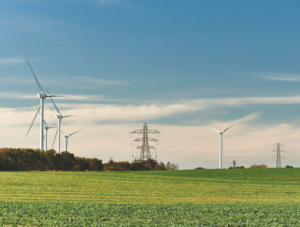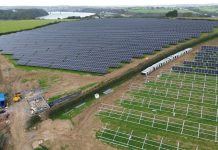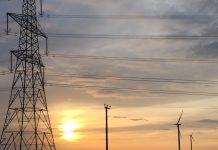 Investments in grid upgrades are welcome but the importance of grid stability cannot be overstated writes Tim Foster, Director of Energy for Business, Conrad Energy
Investments in grid upgrades are welcome but the importance of grid stability cannot be overstated writes Tim Foster, Director of Energy for Business, Conrad Energy
There has been no shortage of funding announcements for UK infrastructure over the course of 2025, and encouragingly much of this money is expected to flow towards the grid. This funding has also been accompanied by (as yet draft) legislation intended to reduce the barriers to development – not least by changing the planning rules. This should help the substantial number of renewable energy projects in the UK’s development pipeline continue to progress which, at least in theory, should help bring net zero targets closer.
Indeed, the UK has unquestionably made impressive progress when it comes to decarbonising the grid, with over half of electricity generated in 2024 being from renewable sources. That is an increase from just 3.4% in 2000. However, it is not enough simply to build renewable energy projects. The energy transition is just that – a total transition of the way we generate and distribute energy, too. As a result, whilst efforts to increase renewable generation capacity are important, this is only one piece of a larger and more complex puzzle.
A crucial piece of that puzzle will be finding a way to ensure that the grid is equipped to absorb the influx of new renewable energy projects. As a growing number of these projects are ‘switched on’, it is creating a number of challenges for the grid. Actually connecting these projects to the grid and transmitting the energy they generate are amongst the most significant challenges, with difficulties in securing grid connections leading to considerable sums being spent to pay wind farms, for instance, not to generate electricity. But this is far from the only challenge and perhaps not the most significant.
Instead, it is grid stability that should arguably be our foremost concern. We do not need to look far afield to see the risks that have been revealed by the pace of change brought about by the energy transition with Spain and Portugal brought to a crashing halt by a huge blackout earlier this year. Of course, the grid in the UK is not directly comparable to the grids in Iberia, but there are similarities and shared weak spots. In practice, this means that although the UK is in many ways further along in its efforts to introduce grid stability measures, it is too soon to say that the UK could not be exposed to a similarly serious event.
One of the key issues to be solved is how to provide sufficient inertia to ensure that sudden changes in frequency do not damage the sensitive equipment used to manage the grid. Historically, this inertia was provided by the spinning turbines that were central to traditional generation methods, whether that was coal- or gas-fired power stations or a nuclear power plant. Solar and wind energy, however, do not create meaningful levels of inertia which leaves the grid shorn of what was effectively a shock absorber and therefore in a potentially vulnerable position.
Fortunately, there are solutions available. There are a number of technologies that can be used to provide a response similar to inertia – albeit delivered in a very different manner. The use of synthetic inertia and/or frequency response will help the UK to continue its transition to clean power without compromising on the reliability and stability of the grid.
Synchronous condensers, an existing technology, can be used to replicate the inertia historically provided by fossil fueled power stations. This is done by providing kinetic energy in the form of rotating mass, which enables the injection of a significant quantity of extra power onto the grid for a very short time. This helps to ensure stability throughout the grid by providing an automatic and near-instantaneous response to sudden rates of change of frequency.
There are also several other stability solutions that can be deployed, including: Battery Energy Storage Systems. These store and then release energy, again almost instantaneously. Other tools in the armoury are grid-forming battery inverters and real-time frequency response.
These technologies are already being rolled out across the grid by NESO via procurement programmes for inertia and other stability solutions, with the grid increasingly less exposed as a result. This will ultimately require a significant investment in time and resources, but the price of inaction would be far higher.




